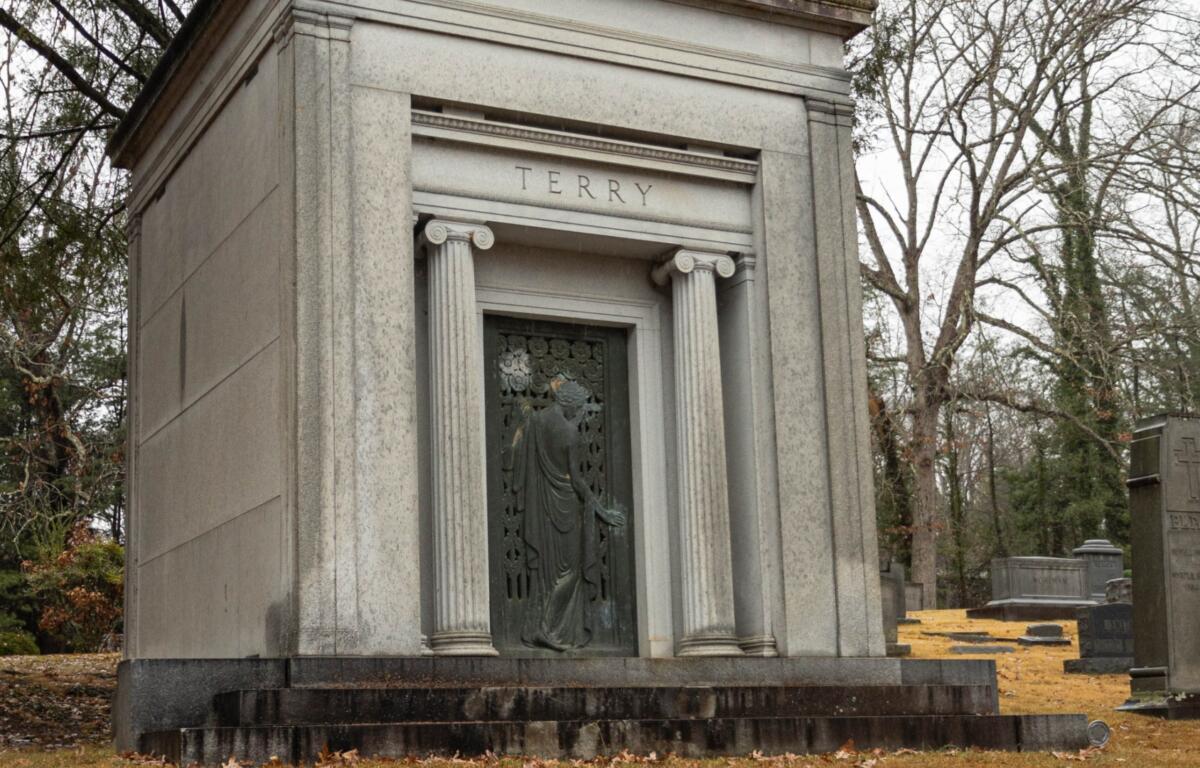EDITOR’S NOTE: Everyone has a story — some more well-known than others. Across Western North Carolina, so much history is buried below the surface. Six feet under. With this series, we introduce you to some of the people who have left marks big and small on this special place we call home.
ASHEVILLE, N.C. (828newsNOW) —
During the period infamous for robber barons, Franklin Silas Terry offered a virtuous alternative.
Affording his employees decency, he won the respect of underlings and superiors. Terry rose to one of the most enviable positions in the country: vice president of General Electric. By creating the first industrial park and corporate retreat, Terry’s influence remains prominent in the lives of millions of workers even now, a century after his death.
Terry was born May 8, 1862, to a family of clockmakers in Connecticut. In high school, Terry met Thomas Edison, an event that likely influenced his future career.
In 1901, Terry founded the National Electric Lamp Association (NELA), which sought to compete with General Electric by buying up smaller lamp manufacturers. Terry is credited as the first to build an industrial park, choosing to consolidate the resources of his company into one location called NELA Park near Cleveland, Ohio.
Terry is also credited as the creator of the corporate retreat for taking his executives to Lake Ontario annually for leisure.
During the First World War, Terry founded a nationwide fundraising campaign to support French orphans, garnering the nickname the “American Godfather” as a result.
Terry became the first vice president of General Electric in 1923, a position he maintained until his death.
His wife, Lillian Slocomb Emerson, was born July 19, 1880, in Fayetteville, North Carolina. Emerson was an automobile enthusiast, making history as the first woman to drive to the top of Mount Mitchell in 1920. She was instrumental in founding Guideposts Magazine with famed preacher and author Dr. Norman Vincent Peale.
The Terrys’ presence remains in Black Mountain today.

Built in 1919, the Manor House, which has been said to be the second largest residence in North Carolina, and its surrounding acreage is owned by Montreat College and operated as the school’s Black Mountain Campus.
The 67-room mansion amid the oaks was designed by famed architect Frank E. Wallis, the architect of Biltmore. When built, the Manor House cost more than $600,000 (more than $10,000,000 adjusted for inflation) and included a bowling alley installed by Brunswick, a 60×20 foot indoor swimming pool and a gymnasium. Frederick Law Olmstead designed the formal gardens.
After the Terrys’ deaths, the Manor House was used as a conference center by the Episcopal Diocese of Western North Carolina, hosting Dr. Martin Luther King Jr. in 1967. The property was sold to Montreat College in 2001.
In 1991, the Terry Estate was inducted to the National Historic Register because of the cultural significance of Mr. Terry’s work in the incandescent light bulb industry and for the architectural significance of the house.
Black Mountain was not just a retreat for the socialites. Mr. Terry was an active member of the chamber of commerce and children from the Black Mountain Orphanage were invited to their home annually for a Christmas party. Mrs. Terry was a philanthropic member of St. James Episcopal Church. The church still has some of the stained glass she donated.

On July 24, 1926, at age 64, Franklin Silas Terry died of a stroke in the Manor House and was buried in a mausoleum at Riverside Cemetery in Asheville.
Mrs. Terry was 73 when she died in a car accident in Bartow, Florida on April 21, 1954, while driving home to the Manor House. An Orlando resident was speeding down the wrong side of the road when he hit Mrs. Terry and her assistant, Helena Murphy, 56. The only survivor of the wreck was Mrs. Terry’s dog, who reportedly growled and bit at the assisting police officers.



